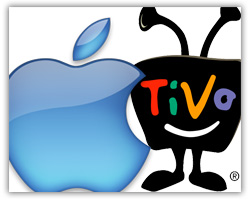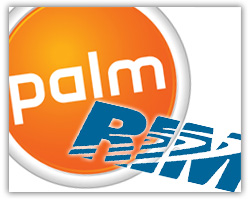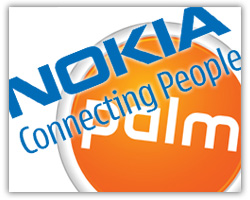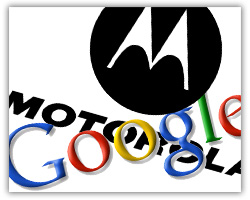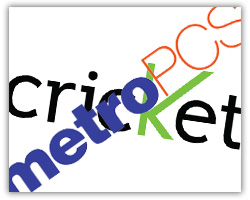
Teamwork has always been a successful way to get a job done. Case in point: Paul McCartney’s solo albums are all well and lovely on their own, but it was the collaborative efforts of four kids from Liverpool that first birthed a musical revolution. And while the technology industry has had its own fair share of notable collaborations (the most recent arguably being Microsoft and Yahoo’s much-debated Internet search partnership) we often find ourselves asking: What would happen if other leading trailblazers in the space (say, Dell and HP) could let bygones be bygones and tie the knot to the benefit of high-tech innovation worldwide? Tempted by the possibilities, we asked several of today’s leading tech experts which consumer electronics behemoths they themselves wish would get a clue, stop butting heads and join forces. For all you dreamers out there, here are the results:
 Apple and TiVo
Apple and TiVo
If one company has proven it can take on the world all by itself, it would be the envied and admired Apple Inc. Sascha Segan, PC Magazine’s Lead Analyst for mobile devices, says Apple has always been a “Lone Ranger” of sorts—but instead of sharing the joy of the win with Tonto, Apple would probably send him into the back room to hide out while it collected the credit. Still, Macworld Editor Jason Snell thinks playing nice in certain instances makes sense, especially as a merger with TiVo would be ideal for both companies. Still, Snell claims there are two major setbacks preventing such a deal from happening: Steve Jobs doesn’t watch TV and Apple doesn’t play well with others. “Apple has so much success in digital media and selling music and TV shows—but, I swear, Steve Jobs just isn’t interested in anything live,” he laughs. That much was apparent when Apple released its digital-media receiver Apple TV in 2007 – the device didn’t sell well and to be honest, it still isn’t.
Nonetheless, Segan says that this hypothetical merger would be a phenomenon in entertainment. What’s more, both experts agree that the collaboration would be successful because both firms have something to gain. TiVo may be the only company that has something Apple wants, in that Apple has never attempted recording content from cable or satellite, and TiVo would be perfect to assist in that endeavor. “Apple could absorb TiVo’s great living room products and produce its own DVR,” suggests Segan. On the flip side, Apple has a great user interface that would be a major upgrade for TiVo’s system. But, as Segan says, Apple’s never been too sure what to do in the living room and has never been too keen on engaging in partnerships. “Apple is the sensitive artist of the tech world,” he says. “They’re brilliant over there, but they do seem to have a few personality complexes when it comes to partnering with others.”
 RIM and Palm
RIM and Palm
According to mobile communications experts, Palm Inc. has a lot to offer with its Linux-based webOS mobile operating system, whose user interface is specifically designed for smartphone touchscreens. Snell believes that if BlackBerry maker Research in Motion (RIM) were to buy Palm, it could elevate the business world’s beloved smartphone to a whole new level. Nonetheless, MobileCrunch Editor Greg Kumparak says people are drawn to the BlackBerry for its well-built hardware—namely, the keyboard—and its email system. As such, he’s not certain how he feels about this merger because while BlackBerry could use a savvy OS like Palm’s to upgrade its look and features, that upgrade would probably take away a lot of the BlackBerry’s original draw. “It’d be a talent grab—there are a lot of talented people at Palm that RIM would love to have on their team, but I’m still not sure it’s the best idea for RIM,” he says.
But Snell disagrees. He thinks the merger would suit both companies well and could provide some actual competition to the iPhone. “This could be something new and exciting for BlackBerry,” he says. “Palm’s webOS would provide a good app platform that could possibly rival Apple’s.” However, were the merger to ever happen, Snell does note that the email app and hardware keyboard should be present in this hypothetical Palm-RIM hybrid phone to give it the authentic BlackBerry feel. At the very least though, in his opinion, there’s definitely acquisition potential here on one end of the spectrum: “Even if it’s not RIM, somebody should really buy up Palm,” he says.
 Nokia and Palm
Nokia and Palm
“Here’s what the two manufacturers have: Palm possesses a really nice touchscreen operating system and a good sense of the U.S. market, and then Nokia has the rest of the world,” says Segan, jokingly, trying to explain why this merger could work. He believes such a pairing would be beneficial because Nokia owns less than a five percent share of the U.S. market and Palm could help it wrestle a greater piece of the pie. Segan thinks Nokia’s Symbian OS, although technically sound, lacks the luster and appeal the U.S. is used to courtesy of current iPhone, BlackBerry and Android interfaces. Palm’s webOS would help solidify a small space in the American market. In agreement, Frost & Sullivan industry analyst Todd Day says the Nokia-Palm merger could present a lot of potential competition in the smartphone market, especially with Windows Mobile phones.
Contrary to Segan and Day though, MobileCrunch’s Kumparak believes this is an irrational merger and describes it as an “altogether weird” idea. He says that Palm’s webOS is the only thing it has going for it and that alone won’t strengthen Nokia’s cash flow. In fact, he says it would most likely drain Nokia’s pocketbook just to acquire Palm. The merger could strengthen Palm, however, because it’s currently banking on the Pre and Pixi—both good, but not great phones—to fix its financial woes. Meanwhile, back in real-life, rumors of a Nokia-Palm merger continue to swirl, but alas, nothing became of the suspected mobile coupling.
 Google and Motorola
Google and Motorola
We know what you’re thinking: These two companies are already collaborating on Android phones. That much is true, but what the tech experts would really like to see here is for Google to buy Motorola’s handset division outright. Whether the Droid is a success or not, it’s insinuated that Google could provide something very special to companies like Motorola who don’t want to write their own operating system and want to just make hardware. Segan thinks this merger would work out well for both parties because Google is trying to be a serious smartphone operator and that it really needs a reliable phone manufacturer. On the flip side, Motorola has been in a bit of a slump since the Razr, though the Cliq (its first handset paired with Google’s Android OS) and Droid are obviously now making waves.
Segan says that the only problem he sees with this particular merger is Google’s infamous “noncommittal attitude.” According to Segan, Google likes to keep its options open rather than buckle down and commit to a partnership—or, in plain English, that Google is the mobile community’s biggest flirt. Disagreeing with Segan on most counts though, Kumparak doesn’t think this merger will give Google a leg up on anything, suggesting that the major perks of this partnership would go to the struggling Motorola, and not benefit Google much at all. “If Google were to start making their own hardware in-house, that would give them a huge lead because they already have all the OS guys there,” he says.
 Cricket and Metro PCS
Cricket and Metro PCS
PC Magazine’s Segan says that this is the merger he’d most want to see come to realization. Metro PCS and Cricket Wireless—the little fishes in a big mobile pond—already have a decent roaming partnership according to him, but Segan wants more. Segan says he would love to see these two “little guys” join forces to take on the bigwigs of the mobile community. “At their current sizes, they are dependent on other carriers, but I think if these two teamed up that they could engage in some impressive price wars with the big four (Verizon, T-Mobile, AT&T, and Sprint),” he says.
Curiously enough, in 2007, Metro PCS offered to buy longtime rival Cricket Wireless, but the offer was denied and the next year the two firms linked up as roaming partners. Both companies are small code division multiple access (CDMA) carriers and they provide very similar services. Segan predicts that if these two mini moguls tag-teamed the market, they could form the world’s 5th largest wireless provider, the main benefit of such a merger being their cheap, broad and unlimited service offerings. In contrast to Segan’s enthusiasm, however, Kumparak thinks that Metro and Cricket have come as far as they can together, and that if they truly wanted to be the Big Four’s 5th wheel, it would have already happened by now.
